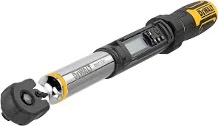The use of key Lean Manufacturing tools in a practical and effective manner is central to the ethos of the Production Support 56 team. We focus on improving activities which add value and removing those which do not. This involves eliminating or minimising the potential for human error and mistakes. This article explores human error, how it impacts the business and how businesses can effectively implement Poka-Yoke to mistake proof and optimise their manufacturing processes and operations.
Mistakes caused by human error are common and according to Murphy’s law if they can happen they will happen and more often than not at the worst time. More severely, Sod’s Law states that things will always go wrong with the worst possible outcome! These so called laws play on the inevitability of error and although they are cast into common culture with little scientific basis I think they are more likely to be a psychological state of extreme pessimism!
In Manufacturing, when mistakes happen, and human error is identified as the root cause, corrective actions prevent or minimise the possibility of the mistake reoccurring in the future are implemented. It can be argued, that the fact that the mistake happened in the first place means that the main issue lays with the design of the process itself rather than with the human interacting with it.
How Mistakes affect Manufacturing Processes?
All Industries at some time will encounter mistakes and human error and often it comes down to the element of risk, consequence and cost, on how they are managed and dealt with. In manufacturing, mistakes have a direct impact on the business with many undesired consequences, here are just a few.
- Reduced Product Quality. Products fail to meet minimum standards or specifications which affect their functionality, reliability and durability.
- Compromised Workplace Safety. Certain errors pose hazards to workers which can cause accidents and injuries. If safety issues are not promptly addressed, businesses find themselves dealing with regulatory fines, legal issues and damage to business reputation.
- Reduced Operational Efficiency. Disruption to workflows due to mistakes create inefficiencies and staff may spend valuable time troubleshooting and taking corrective actions rather than focussing on productive tasks.
- Damaged Plant Equipment. Incorrect machine setting or wrong operation can damage equipment leading to lengthy repairs and downtime. If maintenance is neglected due to spending time correcting machine errors, premature equipment failure will result leading to even greater downtime.
- Wasted Materials. The raw materials used in the process are often expensive and mistakes which result in damage to materials or semi-finished products can’t always be reworked and will require scrapping. Material loss and disposal comes at a significant cost to the business and also requires additional time and resources spent on waste disposal activities.
- Production of Rework or Scrap. Reworking materials or products leads to increased production times, adds operational cost and reduces overall factory efficiency.
- Increased Cost of Production. Errors can result in needing additional materials, extra resources and work associated with corrective actions of scrap and rework.
- Delayed Delivery. Errors disrupt production schedules which delay delivery of products to customers. Late delivery can result in penalties, loss of trust and missed business opportunities.
The core focus for any manufacturing processes is making sure on the delivery of high value, high quality products in a consistent manner, so when errors and mistakes result in product defects and these products reach the customer, the effects can be profound. In such events, customer refunds, compensation or product replacement adds significant cost to the business and can often result in brand damage, loss of reputation and loss of market position. It is certain that today’s ultra-competitive world, this is a position no business wants to find themselves in.
Preventing Mistakes, What is Poka-Yoke?
I’m often asked, ‘what is Poka-Yoke’, and what has it got to do with human error? My answer has always been that it’s a simple technique used to make improvements which either prevent mistakes from happening or makes it easy to spot mistakes once they have happened. I also add that it should be simple and easy to implement, so easy that a child would understand. However, according to my youngest, poka-yoke is something to do with dipping your toast soldiers in your boiled egg but for now we will remain focussed on mistake proofing processes and operations in manufacturing!
Poka-Yoke is a Japanese term that literally means “mistake-proofing” or “error-proofing.” It was introduced by Shigeo Shingo, a Japanese engineer who played a key role in the development and promotion of the Toyota production system (TPS). He worked alongside Taiichi Ohno, considered to be the father of TPS which became the foundation of Lean Manufacturing, a systematic methodology and set of tools which enable continuous improvement and drives a workplace culture of improvement. Poka-Yoke is a technique which is used across many industries such as manufacturing, engineering, and process design. The idea is to prevent human error and mistakes from occurring in the first place or to enable detection as early as possible in a process. The aim is to design systems and processes in such a way that makes it virtually impossible or highly unlikely for errors to happen.
What are the Principles of Poka-Yoke?
The concept of Poka-Yoke revolves around simplicity, as solutions are often straightforward, low cost and easy to implement. It is a proactive approach which not only serves to enhance quality but boosts efficiency and reduces costs associated with scrap or rework.
The underlying and core principles of Poka-Yoke are:
- Anticipate Human Error. It begins with the understanding that humans are fallible and errors are inevitable. By identifying potential mistakes in a process, businesses can proactively design mechanisms to prevent them.
- Fail-Safe Design. Incorporate fail-safe mechanisms into processes. This means creating systems where it is virtually impossible for errors to occur or, if they do, they are immediately identified and rectified.
- Eliminate Inspection. Traditional quality control relies heavily on inspections at the end of the production line. Poka-Yoke shifts the focus to error prevention rather than detection, reducing the need for extensive inspections and rework.
- Simplicity is Key. Poka-Yoke solutions are most effective when they are simple and intuitive. Overly complex systems can lead to confusion and potential new sources of error. The goal is to make the processes as fool proof as possible. Complex solutions are not cost effective and often not worth implementing.
When Would you use Mistake Proofing?
For many manufacturing processes there are often multiple activities where mistakes are most likely to occur and hence where mistake proofing strategies and solutions should be implemented.
In particular:
- When a process requires human input which can lead to a mistake which produces a defect, particularly when people’s skill is required.
- Where the output of a process is transferred to another person.
- Where small errors result in large errors later on in a process.
- Where the consequences of errors are either expensive or dangerous.
What are the Most Common Types of Errors?
In factory or manufacturing facilities, the types of errors encountered broadly fall into one or more of six main categories.
Processing Error. Skipping a process step or not carrying it out to current procedures.
Setup Error. Plant or equipment settings made incorrectly, for example, using the wrong tooling or incorrect temperature setting on an oven.
Missing Parts. In processes where parts are fitted or assembled, not all the parts are present or available.
Improper Parts. The wrong parts are used in the activity.
Operations Error. Workers following the wrong procedure or carrying out an operation incorrectly.
Measurement Error. Incorrect adjustments made to plant equipment or dimension checking of parts measured wrong.
How to Implement Poka-Yoke
1.Identify the Potential Errors
To get started, a thorough analysis of your processes should be conducted in order to identify the potential points of failure. This could involve observing the process in action, analysing historical data on previous errors and talking with employees who work in the area and have experienced the errors first hand. Failure Mode and Effect Analysis (FMEA) is a really useful tool which helps to help identify and rank errors according to the chance of an error occurring and assessing the severity of the consequence. Creating a flowchart or Process Map helps to visualise the process, identify the failure points and communicates the process steps colleagues and stakeholders.
For each process step you should identify where the human interactions are and hence where human error may occur. For each identified error ask – can the step be eliminated? can it be replaced? and can the step be made easier than making the mistake itself? If preventing the mistake itself is not possible then ways in which the error can be detected as early as possible should be identified and implemented.
2. Identify a Suitable Mistake Proofing Technique
One key aspect of Poka-Yoke is the use of setting functions. These are mechanisms designed to make sure that operations and assembly processes are performed correctly. Here are some setting functions which are most commonly used in manufacturing:
Contact Method
This involves the physical contact with parts or components to make sure correct positioning, fitting or alignment. It involves the checking of physical characteristic like a length or depth measurement. Devices like sensors, guide pins or shaped fittings which make it physically impossible to assemble the part incorrectly are great for this type of mistake proofing.
Examples in Manufacturing
- Fixtures with pins that fit into corresponding holes on a part, ensuring it can only be assembled one way.
- Parts with unique geometric features that make improper assembly physically impossible.
Another example of mistake proofing by contact method is the sim card in a mobile phone. The card can only be inserted in one orientation due to the shape of the card and the slot it fits into, this prevents damage to the card and the phone. This is similar to the 3-pin electrical plug which can only be inserted in one orientation, additionally the earth pin is longer than the live or neutral pins which ensures that the longer earth connection makes contact before the others thus preventing damage to equipment and keeps the user safe.

Image by Brett Jordan from Unsplash.

Image by idshah from pixabay
Motion Step Method
This method ensures that a series of actions are performed in the correct order. They are used in complex assemblies or operations where the sequence significantly impacts the outcome.
Examples in Manufacturing
- Assembly line tools that activate only when the previous tool has been correctly engaged and completed its cycle.
- Conveyor systems with automatic checkpoints which corresponds to a specific assembly task which verifies completion of the previous task and allows it to proceed to that next activity or station.
Another example is the use of a torque wrenches fitted to a digital monitoring device which makes sure the bolts have been tightened in the correct order and to the correct torque. This makes sure the assembly has been built correctly in the right order and hasn’t missed any of the critical steps, this ensures both the safety and quality of the final product.

Fixed value
This is a counting method whereby operations or assemblies are set to accept only a certain number of movements or actions which correspond to the fixed number of operations required to complete the task correctly.
Examples in manufacturing
- The fixing of screws in the assembly of a cabinet or other furniture. A bin contains the correct number of screws and signals the operator that all parts have been used so preventing missing screws from the assembly.
- A machine that automatically shuts down after producing the preset number of acceptable products. The most common form of this technique is using a check weigh balance.
Interlocks
Interlocks prevent plant machinery from operating unless certain conditions are met, ensuring that operations proceed only when it is safe and correct to do so.
Examples in manufacturing
- Safety interlocks that prevent machine parts from starting unless all protective guards are in place.
- Electrical or mechanical interlocks that ensure tools are set correctly before operation.
In the household a common example is the operation of the microwave oven. The interlock feature here ensures that harmful microwaves cannot contact a person by preventing its operation with the door open.

Image by Erik Mclean on Unsplash
Control Systems
Advanced control systems use software and electronic controls to ensure processes are completed correctly. They are often integrated into complex manufacturing systems for continuous monitoring and adjustment.
Examples in manufacturing
- Programmable logic controllers (PLCs) that manage machine functions based on specific input criteria, ensuring consistent product quality.
- Automatic feedback systems that adjust process parameters in real-time to maintain product specification. Recent development of fully connected digital twins have the capability to control processes in real time to maintain quality, detect problems and predict failures. These are gaining prominence in recent years, a discussion of digital twins will be covered in a separate article.
3. Test and Validate
Once you have chosen the most appropriate technique, you will need to test it to make sure it works.
- Implement the solution on a small scale and test the parts immediately in next process step, ask the worker to test in the process step or test it before the process step to ensure the conditions are correct.
- Build prototypes of your Poka-Yoke solutions and test them in real-world conditions. Gather feedback from users and stakeholders and amend the design as needed.
- Implement the solution on a small scale to assess their effectiveness before full deployment. Monitor performance metrics such as error rates, productivity, and user satisfaction.
- Poka-Yoke is not a one-time implementation but a continuous improvement process. You should regularly review and update error-proofing mechanisms based on feedback, changing circumstances, or evolving technologies.
4. Integrate Poke-Yoke into Processes
Once you are satisfied that the solution is working as it should and the mistake has not reoccurred, it is time to integrate it into full time operations. When you are at this point, there are a few points which require careful consideration.
Educate. Train employees on the new Poka-Yoke solution and their importance in error prevention. Provide clear instructions and resources to support implementation.
Standardise. Document Poka-Yoke procedures and integrate them into standard operating procedures (SOPs). Ensure that all employees have access to up-to-date information and guidelines.
Monitoring– Continuously monitor the performance of the solutions using relevant metrics. Identify any issues or areas for improvement and take corrective action as needed.
Feedback. Communicate with employees, operatives and stakeholders on the effectiveness of the solution. Use this feedback to amend the design and continuously improve your processes.
Promote Continuous improvement. Foster a culture of continuous improvement and accountability where employees are encouraged to identify and address errors proactively.
What are the Benefits of Poka-Yoke?
- Improved Quality: By preventing errors at the source, Poka-Yoke significantly improves the overall quality of products and services.
- Enhanced Efficiency: Reduction in errors leads to increased efficiency, as there is less time and resources spent on rework and corrections.
- Cost Savings: The proactive nature of Poka-Yoke helps in avoiding costly errors and defects, resulting in significant cost savings over time.
- Employee Empowerment: Involving frontline workers in the error-proofing process empowers them and fosters a culture of continuous improvement.
- Improved safety: Human error is a common cause of workplace accidents. The use of safety interlocks on plant equipment to prevent accidental start up or automating certain decisions to guide workers actions will improve safety and reduce accidents and injuries.
Conclusion
Poke-Yoke is a powerful methodology that empowers organisations to create processes that are robust, reliable, and virtually error-free. By embracing the principles of anticipating errors and designing fail-safe systems, businesses can enhance quality, efficiency, and ultimately achieve a competitive edge in today’s demanding market. As industries evolve, integrating Poka-Yoke into operational strategies will continue to be a cornerstone for sustainable success.
If you would like to find out more about how to implement Poka-Yoke or want to know more about other Lean Process Improvement methods, get in touch with our team or check out our Process Improvement page.

